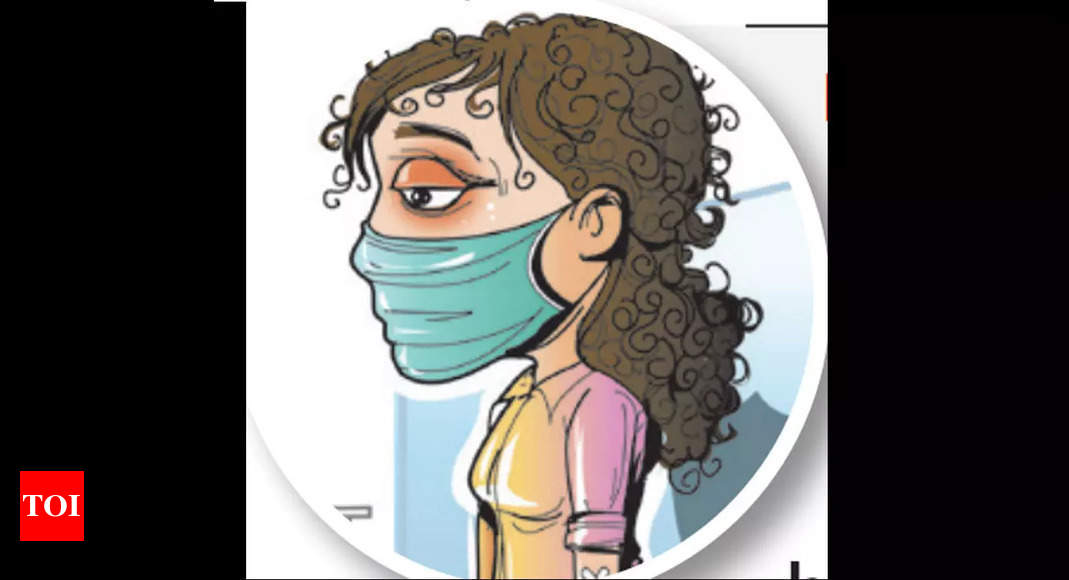[ad_1]
PUNE: There are four types of seasonal influenza viruses — namely A, B, C and D.
Influenza A viruses are classified into subtypes depending on the combinations of the proteins on the surface of the virus. Currently, subtype A(H1N1), also known as the swine flu, and A(H3N2) influenza viruses are circulating.
Only influenza type A viruses are known to have caused pandemics.
The H3N2 subtype evolved from H2N2 virus and caused the pandemic in 1968-69 in Hong Kong.
Since then, H3N2 influenza viruses have rapidly evolved and been the prominent strain in the influenza season, except the Covid pandemic period.
Influenza B viruses are classified into lineages. At present, either B/Yamagata or B/Victoria viruses are in circulation.
Therefore, unlike Covid, which was first identified in 2019, H3N2 has existed for several decades. Another major difference is that while Covid was caused by SARS CoV-2 virus, H3N2 is a subtype of influenza virus.
Figures at a glance
Confirmed influenza cases till March 9, ’23: 3,038
Total influenza-like illness cases: 9,67,749
Total severe acute respiratory illness cases: 15,826
Total H1N1 cases till February 28, 2023: 955
Symptoms to watch out for
Seasonal influenza is characterized by a sudden onset of fever, cough (usually dry), headache, muscle and joint pain, severe malaise (feeling unwell), sore throat and a runny nose. The cough can be severe and can last two or more weeks.
While fever, chills, cough and cold are common in both Covid and H3N2, shortness of breath can be experienced more in case of Covid than influenza.
Treatment
Patients who are not in a high-risk group should be managed with symptomatic treatment and are advised, if symptomatic, to stay home in order to minimize the risk of infecting others in the community. Treatment focuses on relieving symptoms of influenza such as fever.
Young children and elderly people with co-morbidities are the most vulnerable groups in the context of seasonal influenza.
Oseltamivir is the drug recommended by WHO. It is available through the public health system free of cost.
Vaccines are available
Annual seasonal influenza vaccines, also known as quadrivalent vaccines, are against H1N1 and H3N2 subtypes, and the Victoria and Yamagata lineages
Due to the constant evolving nature of influenza viruses, the WHO Global Influenza Surveillance and Response System (GISRS) — a system of National Influenza Centres and WHO Collaborating Centres around the world — continuously monitors the influenza viruses circulating in humans and updates the composition of influenza vaccines twice a year.
Influenza A viruses are classified into subtypes depending on the combinations of the proteins on the surface of the virus. Currently, subtype A(H1N1), also known as the swine flu, and A(H3N2) influenza viruses are circulating.
Only influenza type A viruses are known to have caused pandemics.
The H3N2 subtype evolved from H2N2 virus and caused the pandemic in 1968-69 in Hong Kong.
Since then, H3N2 influenza viruses have rapidly evolved and been the prominent strain in the influenza season, except the Covid pandemic period.
Influenza B viruses are classified into lineages. At present, either B/Yamagata or B/Victoria viruses are in circulation.
Therefore, unlike Covid, which was first identified in 2019, H3N2 has existed for several decades. Another major difference is that while Covid was caused by SARS CoV-2 virus, H3N2 is a subtype of influenza virus.
Figures at a glance
Confirmed influenza cases till March 9, ’23: 3,038
Total influenza-like illness cases: 9,67,749
Total severe acute respiratory illness cases: 15,826
Total H1N1 cases till February 28, 2023: 955
Symptoms to watch out for
Seasonal influenza is characterized by a sudden onset of fever, cough (usually dry), headache, muscle and joint pain, severe malaise (feeling unwell), sore throat and a runny nose. The cough can be severe and can last two or more weeks.
While fever, chills, cough and cold are common in both Covid and H3N2, shortness of breath can be experienced more in case of Covid than influenza.
Treatment
Patients who are not in a high-risk group should be managed with symptomatic treatment and are advised, if symptomatic, to stay home in order to minimize the risk of infecting others in the community. Treatment focuses on relieving symptoms of influenza such as fever.
Young children and elderly people with co-morbidities are the most vulnerable groups in the context of seasonal influenza.
Oseltamivir is the drug recommended by WHO. It is available through the public health system free of cost.
Vaccines are available
Annual seasonal influenza vaccines, also known as quadrivalent vaccines, are against H1N1 and H3N2 subtypes, and the Victoria and Yamagata lineages
Due to the constant evolving nature of influenza viruses, the WHO Global Influenza Surveillance and Response System (GISRS) — a system of National Influenza Centres and WHO Collaborating Centres around the world — continuously monitors the influenza viruses circulating in humans and updates the composition of influenza vaccines twice a year.
[ad_2]
Source link





